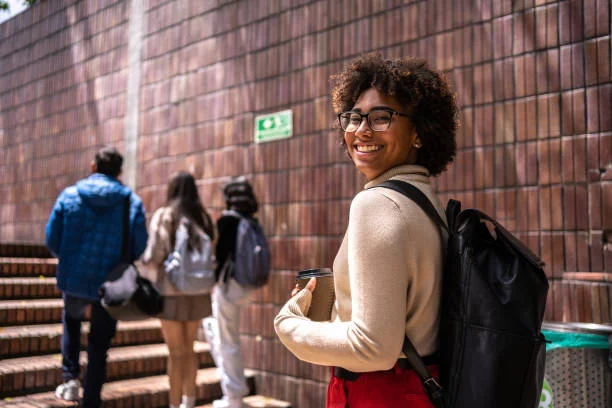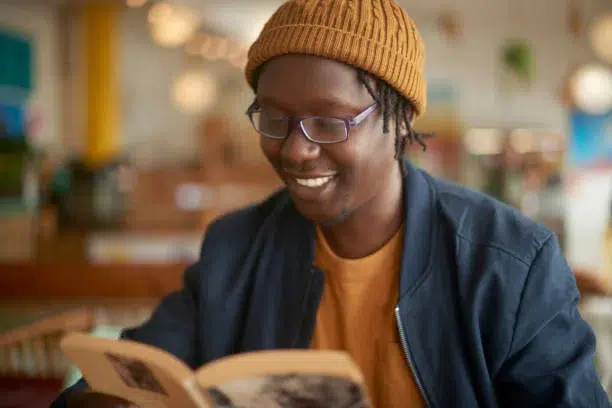Inquiry-Based Teaching Methods
Engage Students
Encourage active participation through hands-on activities, exciting teaching strategies, and real-world problem-solving tasks.
Foster a curious mindset by posing open-ended questions that prompt exploration and critical thinking.
Enhance Learning
Promote a more profound understanding of concepts through investigation and discovery.
Stimulate intellectual growth by allowing students to explore topics independently under guidance.
Develop Critical Thinking
Cultivate analytical skills by challenging students to analyze information, draw conclusions, and present findings.
Empower learners to question, evaluate, and synthesize knowledge from various sources.
Promote Collaboration
Facilitate group discussions and peer interactions to encourage knowledge sharing and diverse perspectives.
Instil communication skills by promoting collaborative projects and fostering teamwork and cooperation.
Differentiated Learning Approaches
Individualized Instruction
Individualized instruction is a teaching strategy that tailors learning content and pace to meet each student’s unique needs. Teachers assess students’ strengths and weaknesses to provide personalized learning experiences.
Embracing individualized instruction allows educators to cater to diverse learning styles, ensuring severy student receives the necessary support to succeed. Teacherss can create a more inclusive and engaging classroom environment.
Flexible Grouping
Flexible grouping involves organizing students based on their learning needs for specific tasks or projects. This strategy allows students to collaborate with peers of varying abilities, promoting peer-to-peer learning.
By implementing flexible grouping, teachers can foster a collaborative atmosphere where students learn from one another. It encourages teamwork and helps students develop essential communication skills.
Project-Based Learning
In project-based learning, students explore real-world problems and challenges through hands-on projects. This approach promotes critical thinking and problem-solving skills while enhancing students’ creativity and innovation.
Project-based learning encourages student engagement and empowers learners to take ownership of their education. It also prepares students for future careers by emphasizing the practical application of knowledge.
Project-Based Learning Techniques
Student Engagement
Engage students by allowing them to explore real-world problems and develop critical thinking skills.
Encouraging students to collaborate in groups fosters teamwork and enhances communication abilities.
Hands-On Experience
Provide hands-on experiences that enable students to apply theoretical knowledge to practical situations.
Technology tools and resources can enhance the learning experience and make it more interactive.
Personalized Learning
Tailoring projects to students’ interests and abilities promotes personalized learning experiences.
Allowing students to choose their project topics can increase motivation and engagement levels.
Cooperative Learning Strategies
Group Work
Group work is a common cooperative learning strategy where students collaborate on tasks or projects. It promotes peer interaction and helps develop communication skills.
Collaborating in groups allows students to share ideas, learn from each other, and build teamwork skills. However, it can sometimes lead to unequal participation or conflicts among group members.
Think-Pair-Share
In the Think-Pair-Share strategy, students think individually about a topic and then pair up to discuss their thoughts before sharing them with the whole class. This technique encourages active participation and engagement.
Think-Pair-Share fosters critical thinking as students are prompted to reflect on their ideas and discuss them with a partner. It also enhances listening skills and collaborative learning.
Jigsaw Technique
The Jigsaw Technique involves dividing a task into parts, with each group member responsible for mastering a specific portion. They then come together to teach their segment to the rest of the group. This method promotes cooperation, responsibility sharing, and accountability.
Jigsaw encourages students to become experts in their assigned topics while relying on others’ expertise for a comprehensive understanding. It enhances problem-solving abilities and team dynamics.
Using Graphic Organizers in Class
Visual Representation
Visual representation is a powerful tool in education. Graphic organizers are diagrams visually illustrating concepts, helping students understand complex information.
Students can use graphic organizers to organize and clarify information, making comprehending and retaining knowledge easier. They help connect ideas and identify relationships between different concepts.
Types of Graphic Organizers
There are various types of graphic organizers, such as mind maps, flowcharts, and Venn diagrams. Each type serves a specific purpose in aiding students’ learning process.
-
Mind maps: Useful for brainstorming and organizing thoughts.
-
Flowcharts: Ideal for illustrating processes and sequences.
-
Venn diagrams: Great for comparing and contrasting information.
Benefits of Using Graphic Organizers
-
Enhance critical thinking skills
-
Improve comprehension and retention
-
Facilitate the organization of information
-
Foster creativity and problem-solving abilities
Implementation in the Classroom
Teachers can integrate graphic organizers into their lessons by incorporating them into presentations, worksheets, or group activities. By utilizing visual aids, educators can enhance student engagement and understanding.
Effective Teaching Strategy Resources
Interactive Learning
Interactive learning engages students actively in the learning process through discussions, group activities, and hands-on experiences. This strategy promotes student engagement and enhances critical thinking skills.
Differentiated Instruction
Differentiated instruction tailors teaching methods to meet individual students’ needs and learning styles. Educators can provide personalized support and adapt content to ensure comprehensive understanding.
Technology Integration
Technology integration involves incorporating digital tools and resources into teaching practices to enhance learning outcomes. It enables interactive lessons, real-time feedback, and access to various educational materials.
Collaborative Learning
Collaborative learning encourages students to work together on projects, fostering teamwork skills and peer-to-peer support. It promotes communication skills, problem-solving abilities, and shared knowledge acquisition.
Inquiry-Based Learning
Inquiry-based learning focuses on exploration, investigation, and problem-solving. It empowers students to ask questions, conduct research, and develop critical thinking abilities through hands-on experiences.
Professional Growth for Educators
Continuous Learning
Educators should prioritize continuous learning to stay updated with the latest teaching strategies and methodologies. Attending workshops, conferences, and online courses can provide valuable insights into innovative approaches.
Peer collaboration allows educators to share best practices, exchange ideas, and receive constructive feedback. Collaborating with colleagues fosters a supportive environment for professional growth and development.
Reflective Practices
Reflective practices involve educators critically analyzing their teaching methods and outcomes to identify areas for improvement. Keeping a reflective journal can help educators track their progress and make necessary adjustments to enhance student learning.
Technology integration in teaching can enhance engagement and cater to diverse learning styles. Educational apps, online resources, and interactive tools can create dynamic student learning experiences.
Personalized Instruction
Adopting personalized instruction allows educators to tailor teaching strategies to meet individual student needs. By understanding each student’s strengths, weaknesses, and learning preferences, educators can create a supportive learning environment conducive to academic success.
Encouraging student-centred learning empowers students to take ownership of their education. Opportunities for collaborative projects, discussions, and hands-on activities promote active engagement and the development of critical thinking skills.
Engaging Students with Gamification
Benefits
Increased motivation: Gamification can boost students’ engagement and motivation by incorporating game elements into learning activities. Enhanced learning: It fosters a more interactive and enjoyable learning experience, leading to better retention of information.
Implementation
To implement gamification effectively, educators can introduce point systems, badges, or leaderboards to track progress and reward achievements. Incorporating storytelling elements and challenges can also enhance student participation.
Examples
-
It is using educational apps that offer rewards for completing tasks.
-
They are introducing classroom competitions where students earn points for answering questions correctly.
Considerations
Time-consuming: Designing gamified activities requires time and effort from educators to ensure they align with learning objectives. Over-reliance: There’s a risk of students focusing more on the game aspect rather than the actual educational content.
Classroom Management Techniques
Active Participation
Encouraging active participation in the classroom can enhance student engagement and learning outcomes. Teachers can create a dynamic learning environment by incorporating group discussions, hands-on activities, and interactive learning tools.
A supportive atmosphere where students feel comfortable sharing their thoughts and ideas is crucial for effective classroom management. Techniques such as think-pair-share activities or peer teaching can promote collaboration and build a sense of community among students.
Clear Expectations
Establishing clear expectations from the beginning of the school year helps set the tone for classroom behaviour. By outlining rules and consequences early on, teachers can create a structured learning environment that promotes respect and discipline.
Providing consistent student performance and behaviour feedback is essential for maintaining a positive classroom atmosphere. Constructive feedback allows students to track their progress and make necessary adjustments to improve learning outcomes.
Flexible Learning Environments
Individualized Instruction
Individualized instruction is an approach where educators tailor content, pacing, and assessment to meet each student’s unique needs. This strategy allows for personalized learning experiences that cater to diverse learning styles.
Creating flexible seating arrangements in the classroom can enhance student engagement and collaboration. Teachers can accommodate different preferences and promote a dynamic learning environment by providing various seating options like standing desks, bean bags, or floor cushions.
Technology Integration
Integrating technology into teaching practices can significantly impact student learning outcomes. Educational apps, interactive whiteboards, and online resources can make lessons more engaging and interactive. Technology also enables teachers to differentiate instruction and provide real-time feedback to students.
Implementing project-based learning encourages students to apply their knowledge in real-world scenarios. This hands-on approach fosters critical thinking, problem-solving skills, and peer collaboration. Projects can be tailored to individual interests, making learning more meaningful and relevant.
Experiential Learning Activities
Hands-On
Hands-on learning activities involve direct interaction with materials or environments to enhance understanding. Students can apply theoretical knowledge in experiments, simulations, or practical tasks.
Engaging in hands-on activities allows students to develop problem-solving skills and critical thinking abilities. They can experiment, make mistakes, and learn from them in a safe environment.
Field Trips
Field trips provide students with real-world experiences outside the classroom. Visiting museums, historical sites, or local businesses can deepen their understanding of academic concepts.
Field trips allow students to observe, ask questions, and interact with professionals in various fields. These experiences make learning more engaging and memorable.
Peer Teaching Methods
Interactive Sessions
Interactive sessions are a vital component of peer teaching methods. Students actively participate in discussions, quizzes, and group activities to reinforce learning.
Encouraging students to collaborate in small groups helps foster a sense of community and enhances their understanding through shared knowledge.
Role Reversal
In a role reversal, students take turns being the teacher. This method promotes critical thinking and deepens comprehension as they explain concepts to their peers.
Peer teaching also allows students to receive feedback from their classmates, improving communication skills and boosting confidence levels.
Learning by Teaching
Learning by teaching involves students preparing lessons for their peers. This approach strengthens their grasp of the subject matter while developing presentation skills.
Enhancing Media Literacy Skills
Interactive Learning
Interactive learning is a teaching strategy that promotes active engagement through various media forms. Students participate in discussions, quizzes, and hands-on activities to enhance their understanding.
Encouraging students to analyze and critique media content can significantly improve their media literacy skills. Students develop a deeper understanding of media messages by evaluating different sources critically.
Real-World Applications
Real-world applications involve connecting classroom learning to everyday situations. Teachers can incorporate current events, advertisements, or social media platforms into lessons to help students apply their media literacy skills in practical scenarios.
Integrating technology tools like online fact-checking websites or multimedia projects can enhance students’ ability to discern credible information from misleading content.
Collaborative Projects
Collaborative projects foster teamwork and communication skills while enhancing media literacy. Assigning group tasks where students create videos, podcasts, or presentations encourages them to collaborate and share diverse perspectives.
Promoting a Growth Mindset
Active Learning
Active learning involves engaging students in the learning process through activities, discussions, and problem-solving tasks. This strategy encourages students to take ownership of their knowledge and enhances critical thinking skills.
Encouraging students to explore new ideas and concepts independently fosters a sense of curiosity and creativity. Educators can promote collaboration and communication skills among students by incorporating hands-on activities and group projects.
Differentiated Instruction
Differentiated instruction tailors teaching methods to meet the diverse needs of students. This approach recognizes learners’ unique strengths, weaknesses, and learning styles.
By personalizing instruction, educators can ensure that each student receives support at their level. This strategy helps students build confidence, motivation, and a deeper understanding of the material.
Feedback and Reflection
Providing timely feedback and opportunities for reflection is crucial for promoting a growth mindset. Constructive feedback helps students identify areas for improvement and celebrate their successes.
Encouraging self-reflection allows students to assess their progress and set goals for future learning. By fostering a culture of continuous improvement, educators empower students to embrace challenges and persevere through setbacks.
Interdisciplinary Teaching Methods
Collaborative Learning
Collaborative learning is a crucial aspect of interdisciplinary teaching methods. It involves students working together in groups to achieve common academic goals. This strategy fosters students’ students’ teamwork, communication skills, and critical thinking abilities.
Project-Based Learning
Project-based learning is another effective interdisciplinary teaching method. Students engage in hands-on projects that require them to apply knowledge from various subjects to solve real-world problems. This approach enhances creativity, problem-solving skills, and overall understanding of concepts.
Differentiated Instruction
Differentiated instruction is crucial in interdisciplinary teaching. It involves tailoring teaching methods and content to meet the diverse learning needs of students. By incorporating various instructional strategies, educators can ensure that all students are engaged and challenged at their skill levels.
Technology Integration
Technology integration plays a significant role in interdisciplinary teaching methods. Educators can use digital tools and resources to facilitate cross-curricular connections and enhance the learning experience for students. Integrating technology promotes digital literacy, innovation, and collaboration among students.
Assessment Strategies
Effective assessment strategies are essential in interdisciplinary teaching. Educators can utilize various assessment methods, such as project presentations, portfolios, and peer evaluations, to evaluate student learning across multiple disciplines. These strategies provide a comprehensive view of student progress and understanding.
Enhancing Media Literacy Skills
Active Learning
Active learning is a crucial teaching strategy involving actively engaging students in learning. Educators can effectively enhance students’ media literacy skills by incorporating activities such as group discussions, role-playing, and hands-on projects.
Encouraging students to analyze and create media content allows them to better understand and understand biases. This hands-on approach fosters critical thinking and helps students become more discerning media consumers.
Technology Integration
Integrating technology into teaching practices can significantly enhance media literacy skills among students. Educators can create interactive learning experiences that simulate real-world media scenarios by utilising various digital tools and platforms.
With technology integration, students can access various multimedia resources, analyze different types of media content, and develop digital communication skills. This approach enhances students’ media literacy and prepares them for the digital landscape they will encounter in their future careers.
Collaboration Opportunities
Collaborative learning provides students with valuable opportunities to collaborate on media-related projects, fostering teamwork and communication skills. Students can share ideas, perspectives, and feedback by collaborating with peers, leading to a more comprehensive understanding of media concepts.
Through collaborative projects, students can explore diverse viewpoints, engage in meaningful discussions, and develop their creativity and problem-solving abilities. These collaborative experiences enhance students’ media literacy skills and prepare them for effective teamwork in various professional settings.
Interdisciplinary Teaching Methods
Collaboration Techniques
Encouraging collaboration among students from various disciplines fosters diverse perspectives and problem-solving skills. Group projects that require input from multiple subjects enhance critical thinking abilities.
Project-Based Learning
Implementing project-based learning allows students to delve deep into a topic, connecting concepts across different subjects. Real-world applications of knowledge improve retention and understanding.
Technology Integration
Incorporating technology in lessons promotes engagement and interactive learning experiences—online resources aid in accessing information from various disciplines, enriching the educational process.
Hands-On Activities
Engaging students in hands-on activities cultivate practical skills and reinforces theoretical knowledge. Experiments and simulations bridge the gap between theory and application effectively.
Flexible Curriculum Design
Designing a flexible curriculum enables educators to tailor lessons to suit interdisciplinary connections. Adapting teaching methods based on student needs enhances comprehension and engagement.
Enhancing Media Literacy Skills
Visual Learning
Visual learning is one of the essential teaching strategies that can significantly enhance media literacy skills. By incorporating visual aids such as videos, infographics, and images, educators can help students better understand and retain information. This approach caters to different learning styles and promotes active engagement in the learning process.
Critical Thinking Development
Fostering critical thinking skills is essential in enhancing media literacy. Encouraging students to analyze and evaluate media messages helps them become more discerning information consumers. By asking thought-provoking questions and engaging in discussions about media content, educators can empower students to think critically about the media they encounter.
Digital Citizenship Education
Teaching students about digital citizenship is crucial in today’s digital age. Educators can equip students with the necessary skills to navigate online spaces responsibly and ethically. Students can develop a deeper understanding of their roles as responsible digital citizens by emphasising online privacy, cyberbullying prevention, and digital footprint management.
Promoting a Growth Mindset
Active Learning
Active learning involves engaging students in activities that promote critical thinking and problem-solving skills. Educators can enhance students’ understanding and retention of the material by encouraging participation and interaction.
Collaborative Learning
Collaborative learning encourages students to work together on projects, fostering teamwork and communication skills. This strategy enhances academic performance and prepares students for real-world collaborative environments.
Differentiated Instruction
Differentiated instruction recognizes that students have diverse learning needs and styles. By tailoring teaching methods to individual students, educators can ensure that all students are challenged and supported appropriately.
Inquiry-Based Learning
Inquiry-based learning promotes curiosity and exploration by encouraging students to ask questions, investigate problems, and develop solutions independently. This approach fosters critical thinking skills and a deeper understanding of the subject.
Feedback and Reflection
Providing timely feedback helps students understand their strengths and areas for improvement. Encouraging self-reflection empowers students to take ownership of their learning journey and continuously strive for growth.
Importance of Assessment Types
Formative Assessment
Formative assessment involves ongoing evaluations during the learning process to provide feedback for improvement. It helps teachers identify areas where students need more support.
Formative assessment allows teachers to adjust their teaching strategies based on real-time feedback from students. It promotes a deeper understanding of concepts and enhances student engagement.
Summative Assessment
Summative assessment evaluates student learning at the end of an instructional unit by comparing it against specific criteria or standards. It provides a snapshot of student achievement.
Summative assessment helps measure overall learning outcomes and determine the effectiveness of teaching methods. It offers insights into areas where students excel and where they might need additional support.
Peer Assessment
Peer assessment involves students evaluating the work of their peers based on set criteria. It encourages collaboration and helps students develop critical thinking skills.
Peer assessment fosters a sense of responsibility among students towards their own and others’ learning. It promotes constructive feedback and enhances communication skills.






